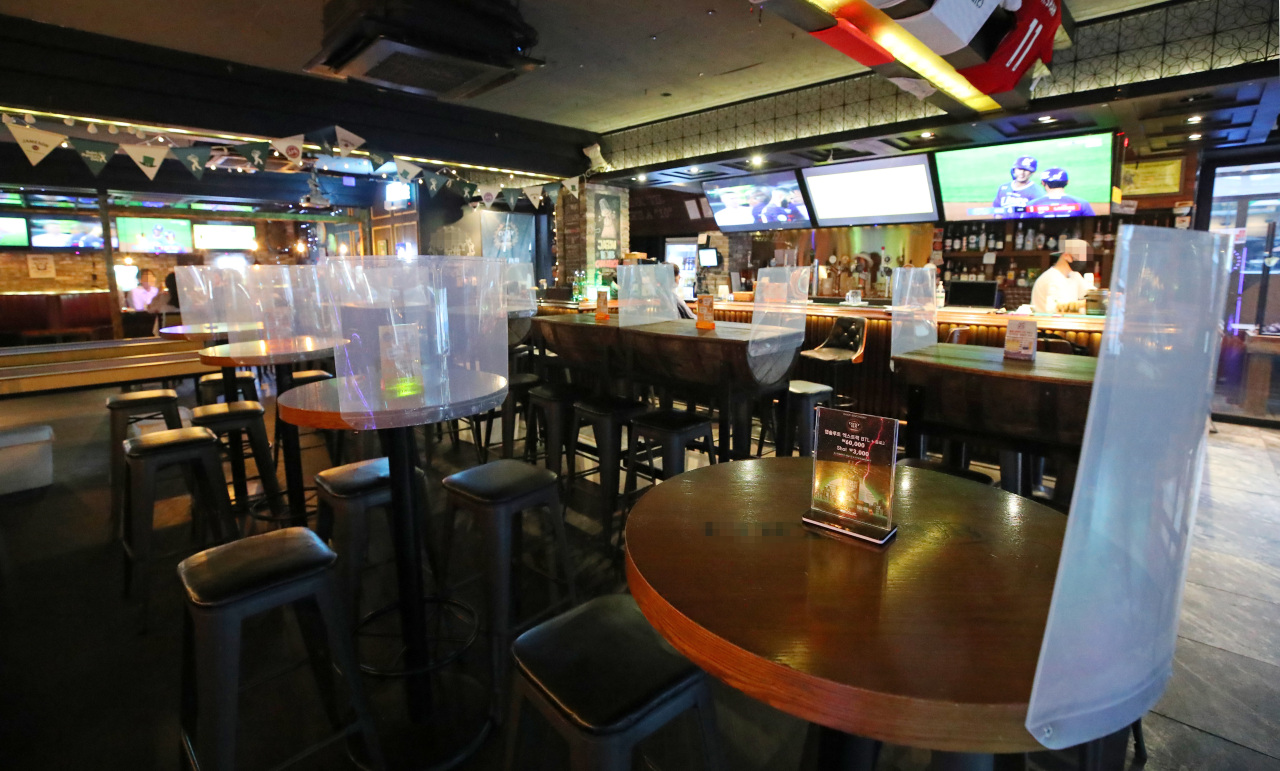The fourth wave of COVID-19 has hit Korea, the country’s top health officials said Wednesday.
In the 24 hours ending Tuesday at midnight, Korea logged 1,212 new cases of COVID-19 -- the second highest figure seen in a day since the pandemic began. The highest one-day rise was recorded Dec. 25 last year with 1,241 cases at the height of the country’s devastating third wave.
Koreans head into summer with prospects of ever harsher social distancing instead of more freedom earlier promised by political leaders and health officials.
Prime Minister Kim Boo-kyum told a meeting of central and municipal offices that Korea “may need to consider the toughest degree of social distancing, if the COVID-19 situation does not improve in the next two or three days.” Under the country’s updated social distancing scheme, the strictest measures mean no more than two people can socialize at once past 6 p.m., among other things.
Kim said reopening in Seoul and its satellite cities, initially set for July 1, already once delayed, would be put off for yet another week. As for the rest of the country, which went ahead with reopening, could suffer a renewed rise in cases, too, he said. A few cities, including Busan, decided to restore some of the social distancing regulations that were lifted last week.
Over the last seven days, an average of 827 cases were reported each day -- higher than most of the days during Korea’s winter wave that lasted from December through early January. The seven-day average of tests conducted was 68,784.
The Ministry of Health and Welfare’s spokesperson Son Young-rae defended the government’s decision to move forward with reopening, and declined to admit the ministry’s public messaging that highlighted getting back to more normal soon had a role in the latest spread.
“Social distancing has been going on for too long and public fatigue is growing,” he said. “The July 1 reopening was planned as first-dose vaccinations of older and more vulnerable groups came to a close over the first half of the year.”
But fully vaccinated people remain a small minority even in older populations, except for those over 75, for whom vaccinations began in April. Nearly 82 percent of people aged 75 and above have been doubly vaccinated with the Pfizer vaccine as of Tuesday, according to official statistics.
By contrast, less than 1 percent of 60- to 74-year-olds -- for whom AstraZeneca vaccinations opened about a month ago -- have received both doses. As the second AstraZeneca dose is given 11 to 12 weeks after the first, it’s not until late August or early September that they can complete their vaccination series and attain maximum protection.
The protection of two doses is crucial now that the delta variant, a more transmissible and vaccine-resistant strain of COVID-19, is spreading.
Son of the ministry said in a radio interview Monday that roughly 7 in every 100 patients diagnosed recently were infected with the delta variant. Last week, slightly over half of all analyzed patient samples tested positive for variants of concern, he said. Delta accounted for nearly a quarter of all variant cases identified.
Delta cuts the effectiveness of a single dose of either the AstraZeneca or Pfizer vaccine to 33 percent, according to a Public Health England study. Two doses of AstraZeneca’s vaccine raised protection against the variant to 60 percent, and two doses of Pfizer’s raised it to 88 percent.
Meanwhile, vaccination rates are stalling amid a supply shortage, with the average number of doses administered over the last seven days down to 73,558 per day from hundreds of thousands during a brief period in June.
As first-dose vaccinations of people in their early 60s continue through this month, anyone younger than 60 years of age, except “essential” workers, is still waiting for a turn.
As of the latest update, 30 percent of Korea’s 51 million people had been vaccinated with one dose of a two-dose regimen. The percentage of Koreans who had been fully vaccinated was 10 percent.
Son said cases were mainly spreading among people in their 20s and 30s, who have yet to be vaccinated, and that getting a test regardless of symptoms was highly encouraged for people in this age group. On the other hand, fewer cases were occurring among people in their 60s and older, the majority of whom are at least partially vaccinated. This was probably why hospitalizations and deaths weren’t rising proportionately, he said.
He added that “voluntary compliance from people, especially young people, with health and safety protocols is paramount for life to return to normal.”
“Korea is in what looks like the early phase of a fourth big wave of infections,” he said.
By Kim Arin (
arin@heraldcorp.com)








![[Today’s K-pop] Blackpink’s Jennie, Lisa invited to Coachella as solo acts](http://res.heraldm.com/phpwas/restmb_idxmake.php?idx=644&simg=/content/image/2024/11/21/20241121050099_0.jpg)